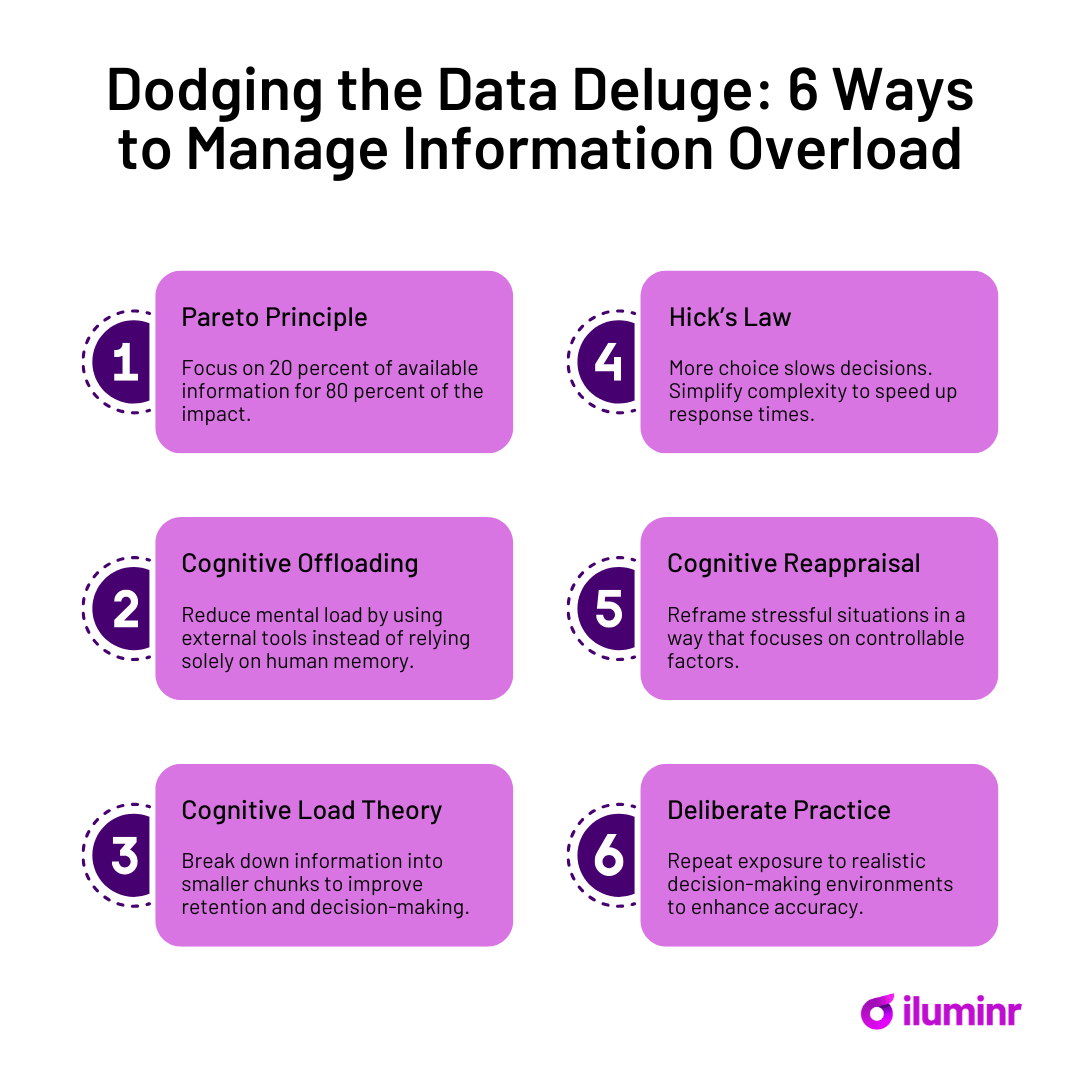Dodging the Data Deluge: 6 Ways to Manage Information Overload
Information overload is a serious consideration in a time where we are all constantly inundated with information noise. By most widely known estimates, the amount of information available is doubling every 12-18 months.
Studies show that when decision-makers are bombarded with too much data, they tend to default to habit as opposed to data, delay critical actions, or make errors due to cognitive fatigue.
In high-stakes environments where rapid response is crucial, cognitive overload can impair judgment, leading to missed warning signs, poor risk assessments, and ultimately, costly consequences.
Strategies from neuroscience and behavioral psychology can help teams process information efficiently, reduce stress, and make better decisions in high-pressure situations.

The Impact of Information Overload
When the brain receives more input than it can process, decision-making becomes slower and less effective.
This often means:
- Slower decisions when too many choices lead to indecision or defaulting to static responses
- Increased mistakes due to cognitive fatigue and reduced focus
- Heightened stress that impairs judgment and response capability
Research in cognitive psychology and neuroscience provides strategies to manage information effectively and improve response time.
6 Science-Backed Strategies to Manage Information Overload
1. Prioritize with the 80/20 Rule (Pareto Principle)
Not all information is equally valuable. The Pareto Principle suggests that 20 percent of available information accounts for 80 percent of the impact.
How to apply it:
- Identify key risk indicators and focus on the most critical signals
- Use intuitive triage systems to separate high-priority threats from background noise
- Implement structured playbooks to streamline response processes
2. Leverage Cognitive Offloading Through Technology
Cognitive offloading reduces mental load by using external tools instead of relying solely on human memory.
How to apply it:
- Use threat intelligence capabilities to filter and categorize risks
- Implement decision-support dashboards that surface only relevant insights
- Automate routine crisis responses with predefined playbooks and workflows
3. Chunk Information for Better Retention
Cognitive Load Theory suggests that breaking down information into smaller chunks improves retention and decision-making.
How to apply it:
- Deliver bite-sized, actionable reports instead of lengthy documents
- Use checklists and frameworks for structured decision-making
- Train with Microsimulations to reinforce learning in short, focused sessions
4. Apply the “Less, but Better” Principle (Hick’s Law)
Hick’s Law states that the more choices available, the longer it takes to make a decision. Simplifying complexity speeds up response times.
How to apply it:
- Use data visualization to highlight trends instead of presenting raw data
- Create tiered response models to limit decision fatigue
- Train teams in rapid decision-making protocols such as the OODA Loop (Observe, Orient, Decide, Act)
5. Strengthen Mental Resilience with Cognitive Reappraisal
Cognitive reappraisal is a psychological strategy that helps individuals reframe stressful situations, allowing them to manage emotions and make clearer decisions under pressure. By shifting perspective, people can transform challenges into opportunities, reducing emotional reactivity and maintaining focus. This technique is widely used by athletes, military personnel, and leaders to stay composed and adaptable in high-stakes environments.
How to apply it:
- Shift focus from trying to control all information to managing key variables effectively
- Build a culture of adaptability where uncertainty is expected and prepared for
- Encourage deliberate pauses to step back, recalibrate, and refocus on priorities
6. Train with Deliberate Practice
The science of deliberate practice shows that expertise is built through focused, structured training that pushes individuals beyond their current abilities. Pilots use flight simulators to refine their responses in high-pressure situations, and the same principle applies to security and crisis teams. Repeated exposure to realistic, high-fidelity decision-making environments enhances pattern recognition, adaptability, and response accuracy.
How to apply it:
- Conduct real-world scenario training in a low-risk setting
- Use Microsimulations to expose teams to complex decision-making exercises
- Be consistent with after-action analysis to refine response strategies and pattern recognition
Dodging the Deluge
Managing large volumes of information effectively is essential in security and crisis response. By prioritizing information, leveraging automation, simplifying complexity, and training decision-makers, organizations can improve response times and reduce errors.
At iluminr, we help organizations build decision-making capability through impact assessment, visualization tools, Microsimulations and Playbooks designed for high-pressure environments.
Interested in learning more? Let’s connect.






